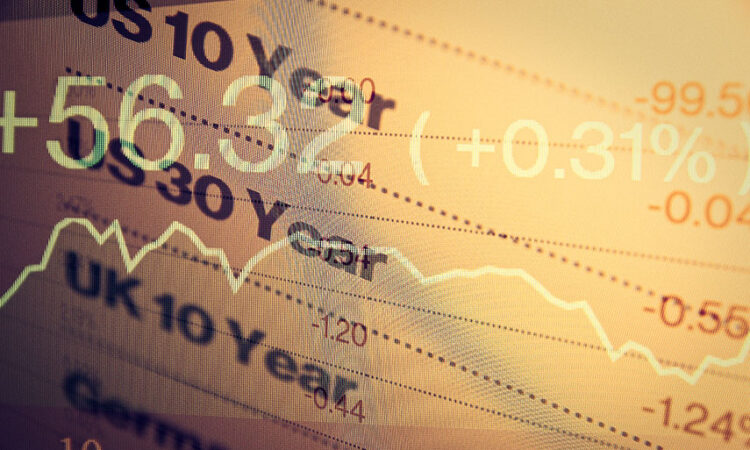
Important information: The value of investments and the income from them can go down as well as up, so you may get back less than you invest.
The sharp increase in inflation and interest rates over the last two years has created a difficult backdrop for bonds, many of which have experienced significant price falls, with the yields rising accordingly. Recently however there have been signs of a recovery, mainly due to the growing belief that the rate hiking cycle may be over.
Nothing is certain, as it all depends on the inflation and economic data going forwards, but the Federal Reserve, Bank of England and European Central Bank have all intimated that interest rates are close to peaking. If this turns out to be the case then bond prices should rise, offering the prospect of capital gains on top of the income.
Another argument in their favour is their value as a diversifier. There is a risk that high interest rates could trigger a severe recession, which may send many share prices lower, but could accelerate the pace of rate cuts and be beneficial for parts of the bond market.
Higher-quality credit, such as government bonds and investment-grade corporate bonds, should hold up better during an economic slowdown and offer more attractive yields than they have done for years. There are several options like this in our Select 50 list of handpicked funds for anyone who wants to go down this route.
One such is the Colchester Global Bond Fund that mainly invests in government debt from around the world. This gives it plenty of flexibility to protect investors’ capital and add value, with the current distribution yield being 2.42%. Please note this is not guaranteed.
Another possibility is the iShares Overseas Government Bond Index Fund that tracks a benchmark of international government debt excluding the UK. It has a slightly lower distribution yield of 2.19%.
The M&G Corporate Bond Fund holds at least 70% of its portfolio in investment grade bonds denominated or hedged back into sterling, but can also invest in government and high yield debt. Corporates typically pay a higher income, hence the distribution yield of 3.89%.
A higher risk alternative is M&G Global Macro Bond Fund that invests the majority of its assets in government and corporate bonds from anywhere in the world including emerging markets. It has a longer modified duration of 7.53 years and is exposed to a host of different currencies, but has a higher distribution yield of 4.63% to compensate.
More cautious investors may prefer to invest in short-dated, government or high-quality corporate bonds. These are less sensitive to inflation and interest rates and could offer a decent low-risk return with the potential to outperform cash.
One option that provides this type of exposure is the AXA Sterling Credit Short Duration Bond Fund, which invests the majority of its assets in sterling denominated investment grade bonds with a bias towards shorter maturities. It holds a low-risk portfolio targeting modest but reliable interest payments and has an underlying yield of 3.7%.
Alternatively there is the passively managed Vanguard Global Short-Term Bond Index Fund that has a much higher proportion of its assets invested in government related bonds. Some would argue that this makes it lower risk than other types of bonds, which could explain the lower yield of 1.96%.
In total there are 11 bond funds on the Select 50 to choose from, covering a wide variety of bonds issued by governments and companies from around the world.
Select 50 bond funds






